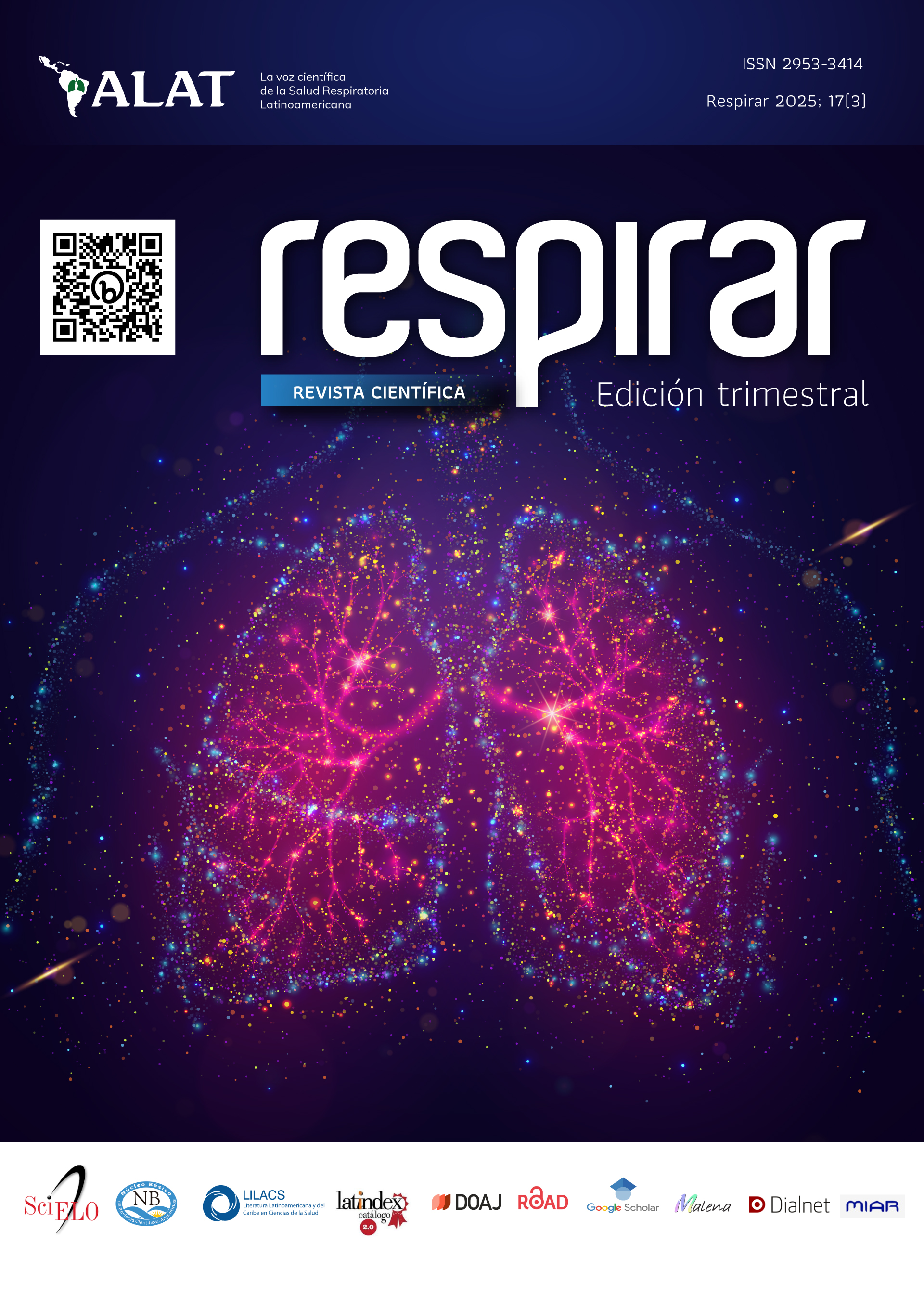Cutaneous Metastasis as First Manifestation of Lung Adenocarcinoma: Case Report
Main Article Content
Abstract
Introduction: Lung adenocarcinoma is a neoplasm whose main types of dissemination are bone, hilar, brain and adrenal. Cutaneous metastasis occurs in 0.7-12% and generally has a more aggressive clinical course and poor short and long-term prognosis.
Clinical case: A 62-year-old male with a 1-year history of clinical symptoms characterized by a progressive increase in the size of a 2x2 cm pearly tumor in the right nostril, with no other associated symptoms, whose biopsy describes metastatic adenocarcinoma of probable pulmonary origin. After 5 months, he begins to lose 34% of total body weight, cough with hemoptoic sputum, dysphonia and cervical adenopathy.
Discussion: The skin is an unusual site of neoplasia metastasis, although within these the lung represents 24% of cutaneous metastases in the male sex. In these cases, it is usually associated with advanced stages of the disease and the appearance of the lesions can mimic benign lesions, particularly if it is a single lesion, with the most common manifestation being a firm, painless nodule.
Conclusion: Cutaneous metastasis of lung cancer is an indicator of poor prognosis, with an estimated overall survival of 12-18 months without treatment, however, new therapies targeting mutations such as the identification of the deletion of exon 19 of Epidermal Growth Factor Receptor (EGFR) and the use of Osimertimib have changed the survival paradigm up to 38 months.
Article Details
Section

This work is licensed under a Creative Commons Attribution 4.0 International License.
How to Cite
References
Zhong W, Zhang W, Dai L, Chen M. The clinical, radiological, postoperative pathological, and genetic features of nodular lung adenocarcinoma: a real-world single-center data. J Thorac Dis 2024;16(5):3228-3250. Doi: 10.21037/jtd-24-510.
Wang X, Wang H, Jia B et al. Cutaneous Metastasis as the First Presentation of Non-Small-Cell Lung Cancer With a BRAF Mutation: A Case Report. Onco Targets Ther 2020;13:13143-13149. Doi:10.2147/OTT.S282593.
Martín Asenjo M, Rodríguez Martín C, Prieto de Paula JM, Martín Guerra JM. Metástasis cutánea y cáncer de pulmón [Cutaneous metastasis and lung cancer]. Semergen 2017;43(2). Doi: 10.1016/j.semerg.2016.04.015
Hunter KW, Crawford NP, Alsarraj J. Mechanisms of metastasis. Breast Cancer Res 2008;10(Suppl 1):S2. Doi: 10.1186/bcr1988.
Strickley JD, Jenson AB, Jung JY. Cutaneous Metastasis. Hematol Oncol Clin North Am 2019;33(1):173-197. Doi: 10.1016/j.hoc.2018.08.008.
Fernández A, Martínez MC, Parra-Blanco V, Avilés Izquierdo JA, Suárez Fernández RM. Metástasis cutáneas de origen visceral. Actas Dermo-Sifiliográficas 2013;104(10):841–853. Doi:10.1016/j.ad.2012.06.005
Ren Y, Zhang Y, Liu Z et al. Significance of thyroid transcription factor 1 and Napsin A for prompting the status of EGFR mutations in lung adenocarcinoma patients. J Thorac Dis 2022;14(3):699-708. Doi:10.21037/jtd-21-1630.
Zhong W, Zhang W, Dai L, Chen M. The clinical, radiological, postoperative pathological, and genetic features of nodular lung adenocarcinoma: a real-world single-center data. J Thorac Dis 2024;16(5):3228-3250. Doi:10.21037/jtd-24-510.
